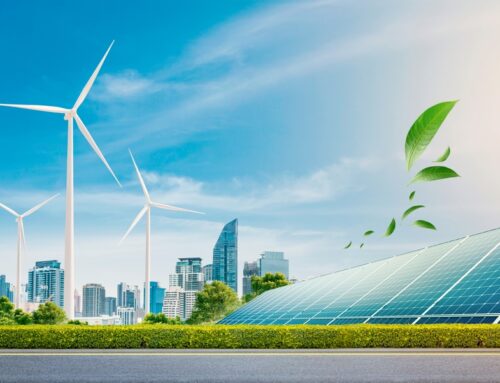Europe’s Energy Transition Stutters, Again
April 17, 2025
ByIrina Slav– Apr 17, 2025, 7:00 PM CDT
- A cold and low-wind winter in Europe exposed the seasonal limitations of wind and solar.
- As spring and summer bring a surge in solar output, Europe faces grid management challenges and a rise in negative electricity prices.
- Despite past progress, Europe’s energy transition is facing setbacks—highlighting the difficulties of relying heavily on intermittent renewables without robust backup systems.

Europe has been at the forefront of global efforts at an energy transition as it prioritized the reduction in carbon dioxide emissions over any other policy priorities. It has had some marked success, too—the EU, which covers most of Europe, saw its emissions dip by 2.9% last year. This year, however, the trend has reversed. Emissions are up. And there’s transition trouble on the way.
This week, climate NGO Centre for Research on Energy and Clean Air reported that European Union emissions in 2024 had fallen by 2.9% from the previous year, when, in turn, emissions had registered an 8.5% decline compared to 2022. The decline, CREA noted, came from less coal consumption, which led a 17% decline in power sector emissions, thanks to the growing deployment of wind and solar installations. However, emissions outside the power generation sector rose. And then winter came.
‘;
document.write(write_html);
}
The winter months in Europe are notable with respect to transition efforts because they represent the trough season for both wind and solar, especially solar. There isn’t much sunshine between November and March, so the conversion factor of solar installations drops sharply during that season. Wind droughts are a less “obligatory” part of the winter season, but they do tend to happen during the colder months—and Europe sure got some wind droughts at the end of 2024. This boosted gas demand led to a faster depletion of gas inventories and sparked fears of whether there would be enough gas to last until spring.
Related: DOGE Hands US DOE The Budget Axe To Slash $10B in Clean Projects
Since trough season continues until spring, it is hardly a surprise that Europe’s emissions have gone up this year as generators cranked up their hydrocarbon-fired power plants to keep the lights and the heating on. In the previous two years, a milder winter made wind and solar’s trough season less noticeable and less pronounced. In winter 2024/2025, Europe was reminded what winter actually meant: low winds and not much sun.
The UK got the same reminder, with it too ramping up coal-fired generation during the first quarter of the year, Reuters reported, contributing to the overall European emissions increase. Hydrocarbon-powered electricity generation rose by 7% in the period, while wind and solar generation dipped 5%, per data from Ember. But this dip was not evenly distributed. Germany saw a 19% decline in wind and solar generation over the first three months of the year, and it also suffered lower hydropower generation. Germany—and others in a similar position—simply had no choice but to turn to coal and gas.
The situation is about to reverse quite dramatically, however, and it will not be good news. With spring and summer on the way, solar power generation is about to explode—and bring electricity prices sharply down. The UK’s grid operator issued a stark warning to that effect this week, saying the warmer, sunnier months of the year will bring an excess of solar power output when demand is lower, threatening to overwhelm the grid.
“One of the great engineering challenges of decarbonisation is managing our system when there is lower demand coinciding with higher levels of generation from renewable sources,” the head of resilience and emergency management at the National Energy System Operator said, as quoted by Bloomberg. The other challenge is negative electricity prices because of the excessive output. Europe has seen a substantial increase in the incidence of negative electricity prices with the surge in wind and solar deployment, and it is going to see further increases as well as the buildout continues.
This will hurt non-intermittent generators, as it has already hurt nuclear generators in France, per a recent Bloomberg report. As wind and solar power take priority over all other forms of energy generation, those other generators need to adjust their output based on wind and solar output—and that costs money. Emissions, meanwhile, will continue to follow overall energy demand and supply patterns, oblivious to transition efforts in Europe or anywhere else.
By Irina Slav for Oilprice.com
More Top Reads From Oilprice.com
Search
RECENT PRESS RELEASES
Related Post




